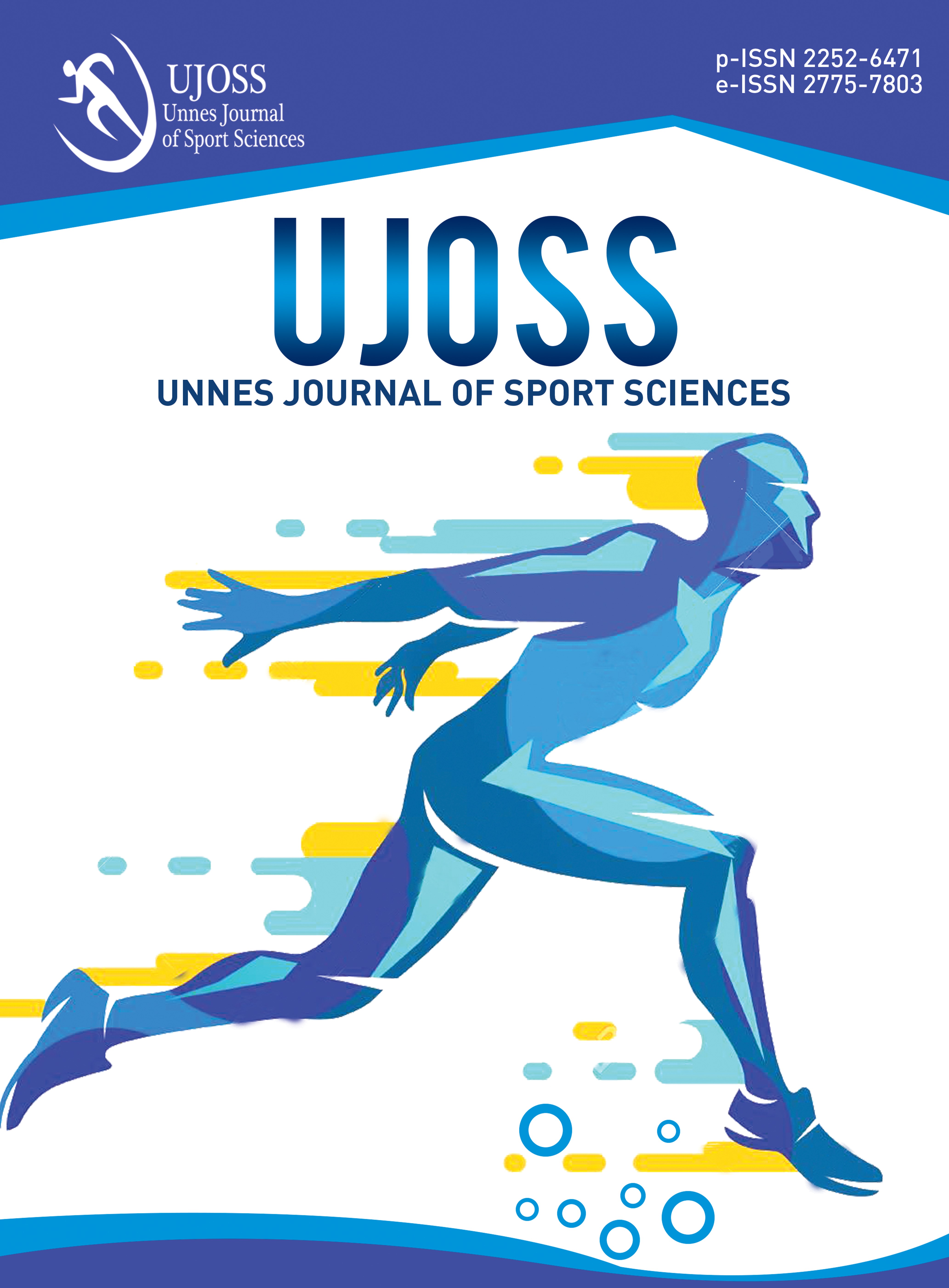PENGARUH METODE LATIHAN HOLLOW SPRINT DAN SPEED TRAINING PARACHUTE TERHADAP HASIL KECEPATAN LARI 100 METER
##plugins.themes.academic_pro.article.main##
Abstract
This research is about the method of hollow sprint training and speed training parachute. Is an exercise method to increase running speed. The research objectives are to find out: the effect of the hollow sprint training method and speed training parachute on the results of 100 meter running speed, the difference in the effect of the hollow sprint training method and the speed training parachute, training methods that affect the results of 100 meter running speed between hollow sprint and speed training parachute. Types of quantitative research. With the experimental method using the MS design. Population 19 students. The research sample was 10 male students with data collection using purposive sampling technique. Data retrieval of 100meter speed test instrument. The data analysis technique used is multiple regression. The results of the study obtained Fcount: 1) the value of the hollow sprint obtained a significance value of 0.004> 0.05 meaning that it has an effect, 2) the value of speed training parachute obtained a significance value of 0.001 > 0.05 meaning that it has an effect, 3) the test value of the difference between the hollow sprint exercise and the speed training parachute is the significance 0.002 > 0.05 meaning there is a difference, 4) the value of the speed training parachute method has a greater effect than the hollow sprint method. Research conclusions: that the Hollow Sprint and Speed Training Parachute methods have an effect on increasing the 100-meter running speed, and there is a difference between the two. The Speed Training Parachute method has a more significant impact.
